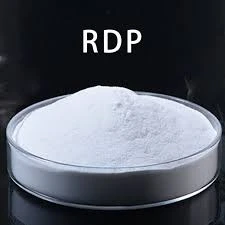
Nov . 14, 2024 09:01 Back to list
hpmc structure
Understanding the HPMC Structure A Comprehensive Overview
Hydroxypropyl methylcellulose (HPMC) is a versatile polymer widely used in pharmaceuticals, food, construction, and various industrial applications. Its structure and properties play a crucial role in determining its functionality and suitability for specific uses. This article aims to delve into the fundamental aspects of HPMC's structure, its characteristics, and its applications.
The Chemical Structure of HPMC
HPMC is a semi-synthetic derivative of cellulose, one of the most prevalent organic polymers found in nature. The basic unit of cellulose is a linear chain of glucose molecules linked by β-1,4-glycosidic bonds. To create HPMC, the cellulose undergoes chemical modification through a process that replaces some of its hydroxyl (–OH) groups with hydroxypropyl and methyl groups. The degree of substitution, or the amount of these groups introduced, can vary, leading to different grades of HPMC with varying properties.
The unique structure of HPMC consists of a hydrophilic cellulose backbone, which provides solubility in water, and hydrophobic hydroxypropyl and methyl groups that affect its thermal stability and gel-forming properties. This amphiphilic nature allows HPMC to interact with both water and organic solvents, making it a versatile compound for diverse applications.
Characteristics of HPMC
The characteristics of HPMC are significantly influenced by its structure. One of the most notable properties is its thickening ability, which makes it an excellent agent for creating stable emulsions and suspensions. HPMC's water-retention capacity contributes to its effectiveness as a binding and film-forming agent in various formulations.
Another important characteristic is its viscosity, which can be tailored by adjusting the degree of substitution and molecular weight of the polymer. This property is vital in applications where control over flow and texture is required, such as in food products, cosmetic formulations, and pharmaceuticals.
hpmc structure

HPMC is also known for its thermal gelation properties. Upon heating, it can form gels that are stable and can revert to a liquid state upon cooling. This thermoreversible property is especially advantageous in drug delivery systems, where controlled release of active ingredients is essential.
Applications of HPMC
The broad range of applications for HPMC is a testament to its unique structure and characteristics. In the pharmaceutical industry, it is often used as an excipient in tablet formulations, providing binding, coating, and controlled release properties. HPMC is also a critical component in various ophthalmic solutions, enabling sustained drug release and enhancing bioavailability.
In the food industry, HPMC serves as a stabilizer, thickener, and emulsifier, improving the texture and shelf life of products such as sauces, dressings, and frozen foods. Its ability to form gels is also exploited in low-calorie foods, where it acts as a fat replacer.
In construction, HPMC is employed in cement mortars and tile adhesives, enhancing workability, adhesion, and water retention.
Conclusion
HPMC is a remarkable polymer whose structure endows it with a myriad of useful characteristics, making it indispensable across multiple industries. Understanding its structure helps in tailoring its applications to meet specific requirements, paving the way for innovation in product formulations. As research continues, the potential of HPMC will likely expand, revealing new applications and enhancing existing technologies.
-
Versatile Hpmc Uses in Different Industries
NewsJun.19,2025
-
Redispersible Powder's Role in Enhancing Durability of Construction Products
NewsJun.19,2025
-
Hydroxyethyl Cellulose Applications Driving Green Industrial Processes
NewsJun.19,2025
-
Exploring Different Redispersible Polymer Powder
NewsJun.19,2025
-
Choosing the Right Mortar Bonding Agent
NewsJun.19,2025
-
Applications and Significance of China Hpmc in Modern Industries
NewsJun.19,2025







